Mutual Broadcasting System
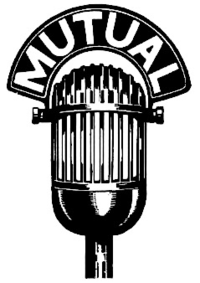 | |
| Type | Cooperative radio network (1934–52); corporate-controlled radio network (1952–99) |
|---|---|
| Country | United States (and Windsor, Ontario, Canada) |
| Founded | September 29, 1934 (organized); October 29, 1934 (incorporated) |
| Dissolved | April 17, 1999 |
| Affiliates | 4 founders (1934); 104 (1938); 384 (1945); 543 (1950); 443 (1960); 950 (1979); 810 (1985) |
The Mutual Broadcasting System (commonly referred to simply as Mutual; sometimes referred to as MBS, the Mutual Broadcasting Company, Mutual Radio or the Mutual Radio Network; corporate name Mutual Broadcasting System, Inc.) was an American radio network in operation from 1934 to 1999. In the golden age of U.S. radio drama, Mutual was best known as the original network home of The Lone Ranger and The Adventures of Superman and as the long-time radio residence of The Shadow. For many years, it was a national broadcaster for Major League Baseball (including the All-Star Game and World Series), the National Football League, and Notre Dame football. From the mid-1930s and for decades after, Mutual ran a highly respected news service accompanied by a variety of popular commentary shows. During the 1970s, Mutual pioneered the nationwide late night call-in radio show and introduced the country to Larry King.
In the early 1970s, acting in much the same style as rival ABC had two years earlier (in 1968), Mutual launched four radio networks: Mutual Black Network (MBN, which evolved to today's American Urban Radio Networks (AURN)), Mutual Cadena Hispánica (trans. "Mutual Spanish Network"), Mutual Southwest Network, & Mutual Lifestyle Radio (was cancelled in 1983).
Of the four national networks of American radio's classic era, Mutual had for decades the largest number of affiliates, but the least certain financial position [1] (which prevented Mutual from expanding into television broadcasting after World War II, as the other three networks did). For the first 18 years of its existence, Mutual was owned and operated as a cooperative (A system similar to that of today's National Public Radio), setting the network apart from its corporate owned competitors. Mutual's member stations shared their own original programming, transmission and promotion expenses, and advertising revenues. From December 30, 1936, when it debuted in the West, the Mutual Broadcasting System had affiliates from coast to coast. Its business structure would change after General Tire assumed majority ownership in 1952 through a series of regional and individual station acquisitions.
Once General Tire sold the network in 1957, Mutual's ownership was largely disconnected from the stations it served, leading to a more conventional, top-down model of program production and distribution. Not long after the sale, one of the network's new executive teams was charged with accepting money to use Mutual as a vehicle for foreign propaganda. The network's reputation was severely damaged, but soon rebounded. Mutual changed hands frequently in succeeding years—even leaving aside larger-scale acquisitions and mergers, its final direct corporate parent, Westwood One, which purchased Mutual in 1985, was the seventh in a string of new owners that followed General Tire.
History
1934–1935: The launch of Mutual
Attempts at establishing cooperatively owned radio networks had been made since the 1920s. In 1929, a group of four radio stations in the major markets of New York City, Chicago, Cincinnati, and Detroit organized into a loose confederation known as the Quality Network. Five years later, a similar or identical group of stations founded the Mutual Broadcasting System.[a] Mutual's original participating stations were WOR–Newark, New Jersey, just outside New York (owned by the Bamberger Broadcasting Service, a division of R.H. Macy and Company), WGN–Chicago (owned by WGN Inc., a subsidiary of the Chicago Tribune), WXYZ–Detroit (owned by Kunsky-Trendle Broadcasting), and WLW–Cincinnati (owned by the Crosley Radio Company). The network was organized on September 29, 1934, with the members contracting for telephone-line transmission facilities and agreeing to collectively enter into contracts with advertisers for their networked shows. WOR and WGN, based in the two largest markets and providing the bulk of the programming, were the acknowledged leaders of the group. On October 29, 1934, Mutual Broadcasting System, Inc. was incorporated, with Bamberger and WGN Inc. each holding 50% of the stock—five each of the 10 total shares.[2]
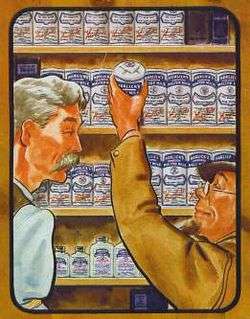
The three national radio networks already in operation—the Columbia Broadcasting System and the National Broadcasting Company's NBC Red and NBC Blue—were corporate controlled: programming was produced by the network (or by advertising agencies of program sponsors that purchased airtime on the network) and distributed to affiliates, most of which were independently owned. In contrast, the Mutual Broadcasting System was run as a true cooperative venture, with programming produced by and shared between the group's members. The majority of the early programming, from WOR and WGN, consisted of musical features and inexpensive dramatic serials. WOR had The Witch's Tale, a horror anthology series whose "hunner-an'-thirteen-year-old" narrator invited listeners to "douse all [the] lights. Now draw up to the fire an' gaze into the embers ...gaaaaze into 'em deep!... an' soon ye'll be across the seas, in th' jungle land of Africa ... hear that chantin' and them savage drums?"[3] WGN contributed the popular comedy series Lum and Abner. Detroit's WXYZ provided The Lone Ranger, which had debuted in 1933 and was already in demand. It is often claimed that Mutual was launched primarily as a vehicle for the Western serial, but Lum and Abner was no less popular at the time.[4] What WLW brought was sheer power; billing itself as "The Nation's Station," in May 1934 it had begun night broadcasting at a massive 500,000 watts, ten times the clear-channel standard.[5]
On May 24, 1935, the network aired its inaugural live event—the first-ever night baseball game, between the Cincinnati Reds and the Philadelphia Phillies.[6] In September, WXYZ dropped out to join NBC Blue, though contractual obligations kept The Lone Ranger on Mutual, airing three times a week, through spring 1942.[7] The hole in the Detroit market was immediately filled by CKLW in Windsor, Ontario, just across the river.[8] In October, the network began a decades-long run as broadcaster of baseball's World Series, with airtime responsibilities shared between WGN's Bob Elson and Quin Ryan and WLW's Red Barber (NBC and CBS also carried the series that year; the Fall Classic would air on all three networks through 1938).[9] Mutual broadcast its first Notre Dame football game that autumn as well, beginning another relationship that would last for decades.[10] As an income-generating business, the Mutual network was a modest endeavor at the start: in the first eleven months of 1935, the cooperative garnered $1.1 million in advertising, compared to NBC's $28.3 million and CBS's $15.8 million.[8]
Late 1930s: National expansion
In the fall of 1936, Mutual lost another of its founding members when WLW departed. The network, however, was in the midst of a major expansion: the first outside group of stations to sign on with Mutual was John Shepard's Colonial Network with its Boston flagship station, WAAB, and thirteen affiliates around New England.[11] There was good reason for this affiliation: Shepard had been involved with the founding of Mutual, and served on its Board of Directors.[12] Cleveland's WGAR also became an affiliate, as did five Midwestern stations: KWK–St. Louis, Mo.; KSO–Des Moines, Iowa; WMT–Cedar Rapids, Iowa; KOIL–Omaha, Neb.; and KFOR–Lincoln, Neb.[13] The big prize came in December, when the Don Lee Broadcasting System, the leading regional web on the West Coast, left CBS to become a central participant in Mutual. Don Lee brought its four owned-and-operated stations—KHJ–Los Angeles, KFRC–San Francisco, KGB–San Diego, and KDB–Santa Barbara—along with six California affiliates and, via shortwave hookup, two more in Hawaii.[8][14] Mutual now had a nationwide presence. During 1936, as well, an offer by Warner Bros. to purchase the network was apparently made and rejected.[15]
In January 1937, ownership of WAAB was consolidated with that of another Boston station controlled by Shepard: WNAC was flagship of the Yankee Network, a circuit of New England radio stations whose membership partially overlapped with that of Colonial.[16] Yankee flagship WNAC had been an affiliate of CBS Radio, changing affiliation to NBC Red later in 1937 when CBS purchased WEEI in that city. The Texas Network soon added twenty-three more stations to the Mutual affiliate roster.[17] WGAR dropped out, but the United Broadcasting Company, part of The Plain Dealer business, joined with its lead station, WHK.[18] Within a few years, this new Ohio participant would become one of the network's central members, a shareowner in Mutual. By the end of 1938, Mutual had 74 exclusive affiliates; though the two leading radio network companies discouraged dual hookups, Mutual shared another 25 affiliates with NBC and 5 with CBS.[19] The total of 104 affiliates put Mutual not far behind the leaders. Because of the corporate strength behind NBC and CBS, however, and the fact that the lion's share of the most powerful stations in the country had already signed with them before Mutual's emergence (the exceptional, and soon departed, WLW aside), the cooperative network would be at a permanent disadvantage.
Programming: The Shadow and diverse political voices
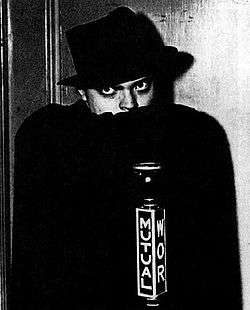
On the programming front, 1936 saw Mutual launch the first network advice show, The Good Will Hour, hosted by John J. Anthony and sponsored by physical culture guru Bernarr Macfadden. The program was a new take on Ask Mister Anthony, which had aired on a local New York station in 1932, "dedicated to helping the sufferers from an antiquated and outmoded domestic relations code." Anthony, whose real name was Lester Kroll, brought a wealth of relevant experience to his work—he had once been jailed for failing to make alimony payments.[21] In July 1937 came the premiere of a seven-part adaptation of Les Misérables, produced, written, and directed by Orson Welles and featuring many of his Mercury Theatre performers—Mercury's first appearance on the air. September 26, 1937, proved a particularly momentous date: that evening, The Shadow came to Mutual.[b] The show would become a mainstay of the network for more than a decade and a half and one of the most popular programs in radio history. For the first year of its Mutual run, Welles provided the voice of The Shadow and his newly created alter ego, Lamont Cranston. He played the part anonymously at first. But, as one chronicler put it, "nothing to do with Welles could remain a secret for very long."[22]
In April 1938, the network picked up The Green Hornet from former member WXYZ. Mutual gave the twice-a-week series its first national exposure until November 1939, when it switched to NBC Blue. (The series would return very briefly to Mutual in the fall of 1940).[23] Mutual also provided the national launching pad for Kay Kyser and his Kollege of Musical Knowledge. Kyser's enormous success at Mutual soon allowed his show to move to NBC and its much larger audience.[24] By May 1939, Mutual was broadcasting the Indianapolis 500.[25] That autumn, Mutual won exclusive broadcast rights to the World Series. As described in a 1943 Supreme Court ruling upholding the regulatory power of the Federal Communications Commission, Mutual "offered this program of outstanding national interest to stations throughout the country, including NBC and CBS affiliates in communities having no other stations. CBS and NBC immediately invoked the 'exclusive affiliation' clauses of their agreements with these stations, and as a result thousands of persons in many sections of the country were unable to hear the broadcasts of the games." This was the first example given in the ruling of "abuses" perpetrated by the two leading broadcast companies.[19]
Mutual also began building a reputation as a strong news service, rivaling the industry leaders in quality if not budget. The broadcasts of WOR reporter Gabriel Heatter from the Lindbergh kidnapping "trial of the century" in 1935, heard over Mutual, were highly regarded; Heatter soon had his own regularly scheduled newscast, aired nationally five nights a week.[26] In 1936, also via WOR, Mutual began broadcasting the reports of news commentator Raymond Gram Swing, who became one of the country's leading voices on foreign affairs.[27] In November 1937, conservative commentator Fulton Lewis Jr., heard five nights weekly from Mutual affiliate WOL, became the first national news personality to broadcast out of Washington, D.C.; he would remain with the network until his death almost three decades later.[28] In 1938, Mutual started rebroadcasting news reports from the BBC and English-language newscasts from the European mainland. The network also began employing its own reporters in Europe as the continent headed toward crisis, including John Steele, Waverly Root, Arthur Mann, and Victor Lusinchi. Among these was Sigrid Schultz, the first accomplished female foreign correspondent to appear on American news radio.[29]
1940s: One of the "Big Four"
Early in 1940, the corporate organization of Mutual became even more inclusive, as described by scholar Cornelia B. Rose:
Until January, 1940, six groups bore the expense of the network operation in varying degree: stations WGN and WOR owned all the stock of the corporation and guaranteed to make up any deficit; the Colonial Network in New England, the Don Lee System on the Pacific Coast, and the group of stations owned by the Cleveland Plain Dealer, participated in responsibility for running expenses. A new contract effective February 1, 1940, provides for contributing membership by all the above group[s] plus station CKLW in Detroit-Windsor. These groups now agree to underwrite expenses and become stockholders in the network.... An operating board for the network is comprised of representatives from each of these groups, together with additional representation appointed by other affiliated stations.[30]

The new cooperative structure was also joined by the owners of WKRC in Cincinnati, which had replaced Mutual cofounder WLW in that market. The Mutual corporation now had 100 shares, apportioned as follows:[32]
Shareholder Lead station Shares Bamberger Broadcasting WOR 25 WGN Inc. WGN 25 Don Lee Network KHJ 25 Colonial Network WAAB 6 United Broadcasting WHK 6 Western Ontario Broadcasting CKLW 6 The Cincinnati Times-Star WKRC 6 Fred Weber Mutual general manager 1
In 1941, WOR's official city of license was changed to New York. Within two years, the Colonial Network's affiliate roster and shares in Mutual had been fully absorbed into the Yankee Network by John Shepard III; WNAC was the sole flagship, WAAB having been moved to Worcester, in central Massachusetts, to avoid duopoly restrictions. With WBZ taking over the slot as the NBC Red affiliate in Boston, WNAC switched to Mutual. In January 1943, the Federal Communications Commission (FCC) approved the sale of the Yankee Network—with WNAC, its three other owned-and-operated stations, its contracts with 17 additional affiliates, and its Mutual shares—to the Ohio-based General Tire and Rubber Company.[16][33]
Already by 1940, Mutual was on a par with the industry leaders in terms of affiliate roster size.[c] Still, because Mutual affiliates were mostly in small markets or lesser stations in big ones, the network lagged way behind in advertising revenue—NBC took in eleven times as much as Mutual that year.[34][d] In 1941, the FCC, calling for NBC to divest one of its two networks, observed that the company "has utilized the Blue to forestall competition with the Red .... Mutual is excluded from, or only lamely admitted to, many important markets."[35] On January 10, 1942, Mutual filed a $10.275 million suit against NBC and its parent company, RCA, alleging a conspiracy "hindering and restricting Mutual freely and fairly to compete in the transmission in interstate commerce of nationwide network programs."[36] The FCC's Supreme Court victory in 1943 led to the sale of the Blue Network and Mutual dropping its lawsuit.[37] These developments appear to have been of more symbolic than practical value to Mutual—the transfer of the NBC Blue stations to the new American Broadcasting Company did little to help Mutual's competitive position. In 1945 it reached 384 affiliates, and by December 1948, Mutual Broadcasting was heard on more than 500 stations in the United States.[38] But this growth did not reflect any ability on Mutual's part to attract leading stations from the corporate-controlled networks. Rather, the FCC had eased its technical standards for local stations, facilitating the establishment of new outlets in small markets: between 1945 and 1952, the number of AM stations rose from around 940 to more than 2,350.[39] It was these new, relatively weak stations Mutual kept picking up. Though by now it had many more affiliates than any other U.S. radio network, for the most part they remained "less desirable in frequency, power, and coverage," as the Supreme Court had put it.[19] For instance, in the postwar era CBS and NBC covered all of North Carolina each with only four stations. Mutual needed fourteen affiliates to deliver comparable statewide coverage.[40]
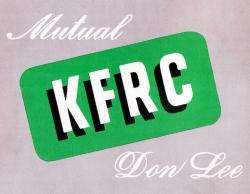
Late in the decade, there was a brief exploration into the idea of launching a Mutual television network, serious enough to prompt talks with Metro-Goldwyn-Mayer as a potential source of programming talent.[41] In fact, Bamberger Broadcasting's WOR-TV & WOIC (the latter a Washington, D.C. video outlet) maintained letterhead with "Mutual Television" decorating their identifications. Beyond this, there is no confirmation, however, that a cooperative video service was ever seriously considered.[42] The plans never got off the ground and Mutual thus became the only one of the "Big Four" U.S. radio networks not to start (and eventually be dominated by) a television network. While there was no Mutual TV network, this did not mean the group did not have an influence over commercial television's early development. Several Mutual radio affiliates launched their own television stations that would often be affiliated with the television networks of ABC, NBC, CBS or DuMont. The cooperative also held the rights to a number of valuable radio properties that made the transition to the new medium, including two of the era's most popular variations on what would later become known as the tabloid talk show and "reality" programming: the crabby gabfest Leave It to the Girls and, in particular, Queen for a Day, which both started on Mutual radio in 1945. Referred to by some as a "misery show," Queen for a Day "awarded prizes to women who could come up with the most heart-stabbing stories told by the sick and the downtrodden .... On one show, a mother of nine requested a washing machine to replace one that broke when it fell on her husband and disabled him—and who, by the way, also needed heart surgery."[43] In May 1947, a simulcast version began airing on the Don Lee system's experimental TV station in Los Angeles, W6XAO (later KTSL). It was a smash hit, and by the turn of the decade TV stations all along the coast were broadcasting it to high ratings.[44][e] In the 1950s, Mutual would stare down NBC for four years as the mighty network sought to take control of the show.
Programming: World War II and Superman

Offscreen, Mutual remained an enterprising broadcaster. In 1940, a program featuring Cedric Foster joined Mutual's respected schedule of news and opinion shows. Foster's claim to fame was as the first daytime commentator to be heard nationally on a daily basis.[46] The network aired that year's NFL Championship Game on December 8, the first national broadcast of the annual event.[47] Over the following half decade, Mutual's war coverage held its own with that of the wealthier networks, featuring field correspondents such as Henry Shapiro and Piet Van T Veer and commentators such as Cecil Brown, formerly of CBS.[48] At 2:26 p.m. Eastern time, on Sunday, December 7, 1941, Mutual flagship station WOR interrupted a football game broadcast with a news flash reporting the Japanese attack on Pearl Harbor. It was the first public announcement of the attack heard on the U.S. mainland. The first bombs had dropped 63 minutes earlier.[49] In May 1945, Sigrid Schultz reported from one of the last Nazi concentration camps to be discovered, Ravensbrück.[50] The following month, Meet the Press premiered with Martha Rountree as moderator.[51] For a year and a half in the late 1940s, William Shirer came over from CBS to do current events commentary after his famous falling out with Edward Murrow.[52] In 1948, Mutual's four-part series To Secure These Rights, dramatizing the findings of President Truman's Committee on Civil Rights, outraged many politicians and the network's own affiliates in the segregated South.[53]
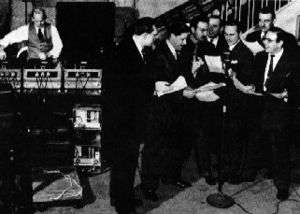
In the field of entertainment, Mutual built on the incomparable success of The Shadow. WGN's Chicago Theater of the Air, featuring hour-long opera and musical theater productions before a live audience, was broadcast for the first time in May 1940. By 1943, the weekly show was being recorded in front of houses 4,000 strong, gathered to see performances featuring a full orchestra and chorus. Chicago Theater of the Air would run on Mutual through March 1955.[54] Mutual provided an early national outlet for the influential, iconoclastic satirist Henry Morgan, whose show Here's Morgan began its network run in October 1940. Though The Lone Ranger moved over to NBC Blue in May 1942, within a few months Mutual had another reliable, and no less famous, action hero. The Adventures of Superman, picked up from WOR, would run on the network from August 1942 to June 1949. In April 1943, Mutual launched what would turn into one of its longest-lasting shows: debuting as The Return of Nick Carter and later retitled Nick Carter, Master Detective, it would be a network staple through September 1955. From May 1943 through May 1946, Mutual aired The New Adventures of Sherlock Holmes, starring Basil Rathbone and Nigel Bruce. An earlier incarnation of the show had run briefly on the network in 1936; a less starry version would return to Mutual from September 1947 through June 1949.[55] The Mysterious Traveler, a proto–Twilight Zone anthology series, aired every week on Mutual from December 1943 until September 1952.
In February 1946, Mutual introduced a quiz show, Twenty Questions, that would run for more than seven years. In October, the detective series Let George Do It, starring Bob Bailey, launched as a Mutual/Don Lee presentation; it would also run into the mid-1950s. For two years, starting in 1946 as well, Steve Allen got his first network exposure on the Mutual/Don Lee morning show Smile Time, out of Los Angeles's KHJ. In February 1947, the religiously oriented Family Theater premiered; with frequent appearances by major Hollywood stars, the series aired on Mutual for ten and a half years. That March, Kate Smith, a major star on CBS since 1931, moved over to Mutual. During most of her initial run at the network, which lasted until September 1951, she had two distinct weekday shows, each 15 minutes long: Kate Smith Speaks, at noon, and Kate Smith Sings, later in the hour.[56] The network gave an outlet to radio dramatist Wyllis Cooper and his highly regarded suspense anthology Quiet, Please, which ran on Mutual from June 1947 to September 1948. It also aired actor Alan Ladd's similarly lauded drama about a crime-solving mystery novelist, Box 13, which ran for precisely a year. Its 52 episodes, which aired every Sunday beginning August 22, 1948, were produced by Ladd's own company, Mayfair Productions.
1950s: New ownership
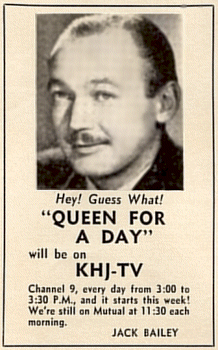
Toward the end of 1950, the executors of the estate of Thomas S. Lee (the son of Don Lee, who had died in 1934) decided to liquidate the estate's interests in the broadcasting field. The Don Lee Broadcasting System, with its major station groups KHJ in Los Angeles and KFRC in San Francisco and its shares in the Mutual Broadcasting System, was sold to General Tire (which already had a stake in Mutual via its Yankee Network holdings).[58][f] Around the same time, Mutual acquired the television broadcast rights to the World Series and All-Star Game for the next six years. Mutual may have been reindulging in TV network dreams or simply taking advantage of a long-standing business relationship; in either case, the broadcast rights were sold to NBC in time for the following season's games at an enormous profit.[59][g]
Early in 1952, General Tire purchased the Bamberger Broadcasting Service from R.H. Macy and Company. With the deal, General Tire acquired the WOR radio and TV stations and the rights to the name General Teleradio, under which the company merged its broadcasting interests as a new division (Bamberger had previously sold its TV station in the nation's capital, WOIC, to CBS and the Washington Post).[60] Most importantly, as far as the future of the Mutual Broadcasting System was concerned, WOR's founding shares in the network, when added to the Yankee and Don Lee holdings, gave General Tire majority control of Mutual.[61] That same year, NBC began its attempts to win the television rights to Queen for a Day from Mutual. As a measure of the afternoon show's success, its audience at its new Los Angeles home, General Teleradio/Don Lee's KHJ-TV, was triple that of the city's six other stations combined.[62] Mutual might not have had a TV network, but it controlled one of the most profitable properties in the early history of commercial television.[h]
Mutual was at this point the largest U.S. radio network in affiliate numbers, by far—it had 560, almost three times as many as its most powerful competitors, CBS (194) and NBC (191).[63][i] In 1955, General Tire expanded its media holdings by acquiring RKO Radio Pictures from Howard Hughes, only to close the movie studio a year and a half later (General Teleradio, renamed RKO Teleradio after the acquisition, would soon be known as RKO General). General Tire also decided to spin off its holdings in Mutual and sell it as a programming service even as it retained the stations that had given it control. Indeed, in 1956, General purchased a governing interest in yet another Mutual shareholder, Western Ontario Broadcasting, and its station in Windsor, CKLW. In July 1957, General Tire sold Mutual to a group led by Dr. Armand Hammer.[64]
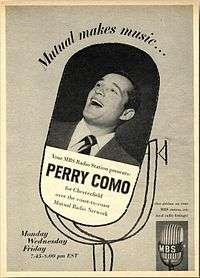
The network soon changed hands again: in September 1958, it was acquired by the Scranton Corporation.[65] Scranton was under the control of the F.L. Jacobs Company, whose chairman, Alexander Guterma, envisioned a media empire uniting Mutual with another recent purchase, the Hal Roach movie studio. After being questioned by federal investigators in February 1959 about financial improprieties, Guterma stepped down. Mutual, by this point, was floundering. For some years it had been run by owners who were either uninterested (General Tire, Armand Hammer) or now, as a growing amount of evidence would show, criminal. Mutual was also confronted with the situation the entire radio industry was facing: major advertisers were abandoning radio for television. Commercial rates had been cut. Limited sponsorship packages had been introduced, in which an advertiser could back a show for an abbreviated period rather than an entire season—but there was no reversing the trend. The networks were left with the bills for an increasing number of nonsponsored programs, known in the industry as "sustaining" shows.[66] The loss of mainstay advertisers was accompanied by what historian Ronald Garay describes as the "mass desertion of network radio talent, management and technicians for television .... [T]hese people were taking with them the programming that had popularized the radio networks."[67]
Under its new chairman, Hal Roach Jr., F.L. Jacobs put Mutual into Chapter 11 bankruptcy. In September 1959, Guterma, Roach, and Garland Culpepper, a Scranton Corp. vice president, were indicted for failing to register as "foreign agents"; they were charged with secretly accepting money from Dominican Republic dictator Rafael Trujillo that previous January in return for favorable coverage of the country and its government on Mutual news programs.[68] It was never proven that Guterma, who was identified as the primary player on Mutual's side and pleaded no contest to the charge, actually fulfilled his part of the deal and arranged for slanted coverage. Nonetheless, the incident led to a reported 130 stations cutting their affiliation with Mutual.[69] Whether precipitated by the scandal or not, among the stations cutting its ties with Mutual in 1959 was one of the network's two original flagships, WOR.[70] Businessman Albert G. McCarthy, meanwhile, had taken over the network, arranging to settle its debts while seeking an owner interested in running it on an ongoing basis.[71]
Programming: Korean War and original drama's decline
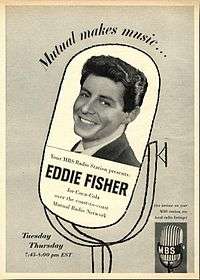
Before the Guterma fiasco, the network had maintained its reputation for running a strong news organization. As the conflict on the Korean peninsula began to heat up in mid-1950, Mutual started airing two special reports nightly on the situation, featuring the commentary of Major George Fielding Eliot, military analyst for CBS during World War II. By August, Mutual was represented by six correspondents in Korea, more than ABC or NBC.[72] In June 1958, just a few months before the Scranton takeover, the network had launched a nightly 25-minute newscast, The World Today, hosted by Westbrook Van Voorhis, famous as the voice of The March of Time. On occasion, Mutual's commentary programs made the news: On March 11, 1954, Fulton Lewis Jr. featured Senator Joseph McCarthy as his guest, two days after the senator's ethics had been called into question on the TV show See It Now, hosted by Edward R. Murrow. In his radio interview, McCarthy dismissed Murrow as "the extreme left-wing, bleeding-heart element of television."[73]
By the end of the 1950s, Mutual had forsworn original dramatic programming. Early in the decade, however, it picked up the adventure series Challenge of the Yukon, which had originated at Mutual cofounder WXYZ in 1938 after the station's departure from the network. The show, subsequently renamed Sergeant Preston of the Yukon, ran on Mutual from January 1950 until its finale in June 1955. In 1950 as well, Mutual introduced radio listeners to adult science fiction with 2000 Plus, which first aired on March 15, almost a month before the premiere of NBC's similarly themed Dimension X. The Shadow's long run finally ended in December 1954. In November 1957, Mutual aired the final episodes of its last two remaining half-hour original dramatic shows, Counterspy and Gang Busters, both picked up from other networks earlier in the decade. It would be almost sixteen years before the network again aired a new dramatic series. In 1955, the famous comedy team Bob and Ray came over from NBC for a five-day-a-week afternoon show.[74] Kate Smith returned in 1958 for her final radio series, which ran from January to August.[56] Sports began to occupy an increasing portion of Mutual's schedule: the network began regularly airing a Major League Baseball Game of the Day, every day except Sunday. This expansion into daily sports programming would run well into the 1960s.[j] While baseball's World Series and All-Star Game would go to rival NBC in 1957, Mutual secured exclusive national radio rights the following year to Notre Dame football, which would remain a cornerstone for the rest of the network's existence.[75]
1960s–1970s: Narrowed focus
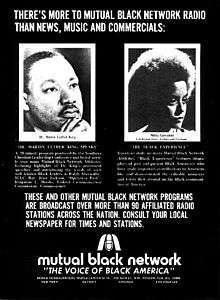
In the spring of 1960, the 3M Company stepped in, purchasing Mutual and restoring much-needed stability to the operation.[76] Despite the recent scandal, Mutual still had 443 affiliates, easily the most of any network. By this time, as historian Jim Cox describes, both Mutual and ABC "had largely wiped their slates clean of most of their network programming—save news and sporting events and a few long-running features".[77] This would characterize Mutual's essential approach for the next three and a half decades, through a further series of ownership changes.
In July 1966, 3M sold the network to a privately held company, Mutual Industries, Inc., headed by John P. Fraim.[78][79] Upon Mutual Industries's acquisition of Mutual, it was renamed to "Mutual Broadcasting Corporation". The following month, after the death of Mutual stalwart Fulton Lewis Jr., his son Fulton Lewis III took over his Monday-to-Friday, 7 p.m. slot.[80] When ABC Radio "split" into four demographically targeted networks on January 1, 1968, Mutual unsuccessfully sued to block the move. Meanwhile, the network was undergoing some management instability, with frequent changes at the top: for example, Matthew J. Culligan was Mutual's president from October 1966 to June 1968. He was replaced by Robert R. Pauley, who came over from the American Broadcasting Company's radio division, where he had served as president for nearly seven years.[81] But Pauley only lasted a year, and resigned after clashes with the board over the need for cost-cutting, and other decisions with which he disagreed. His replacement was Victor C. Diehm, owner of several Mutual-affiliated radio stations and active on the Mutual Affiliates Advisory Council.[82] But Diehm also did not remain in the position of Mutual's president for very long. Four years later, he was replaced by a new president, a former Miami radio executive named C. Edward Little. Under Little, Mutual began its own niche programming services, taking advantage, like ABC, of the prevailing FCC requirement that all radio stations, of whatever primary format, regularly air news and public affairs (a responsibility that would be eliminated in the early 1980s).
In 1967, Ohio businessman Daniel H. Overmeyer looked to start his own TV network, and sought a merger with Mutual; the offer was quickly rebuffed, but three Mutual stockholders joined with eleven other investors to buy Overmyer's hookup and rename it the United Network. The net (and its only offering, "The Las Vegas Show") folded after only a month on the air. On May 1, 1972, the network launched the Mutual Black Network (MBN) and Mutual Cadena Hispánica (aka the Mutual Spanish Network); each provided 100 five-minute-long news and sports capsules a week, along with other programming.[83] While the Spanish-language service would last only six months, by 1974 MBN had 98 affiliates.[84] It was eventually spun off and acquired by the Sheridan Broadcasting Corporation, leading to the creation of American Urban Radio Networks.[85] Additional targeted services, such as the Mutual Southwest Network and Mutual Lifestyle Radio, followed from Mutual.
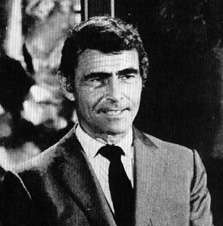
In the early 1970s, Mutual began using its distinctive "Mutualert" network cue tones, or "bee-doops" as they were also called. These tones were retained by Westwood One for several years after Mutual's demise in 1999. On September 30, 1977, Amway bought the network.[86] Soon after the purchase, Mutual began developing what would become the first nationwide commercial broadcast satellite network, leading to the end of decades of reliance on telephone lines for the broadcast industry's transmission capacity.[87] In 1979, Amway purchased WCFL from the Chicago Federation of Labor. For the first time, the network that had been founded by radio stations directly controlled a station of its own, and in one of the country's largest markets. Mutual also reached its greatest number of affiliates that year—950. This was fewer than ABC, whose multipronged approach had proven very successful, but far in front of NBC and CBS.[17] It appeared that Amway was ready to pose a major challenge to the industry leaders.
Programming: Rise of the call-in talk show
One of the few primary network programs outside of news and sports that Mutual initiated during this era became one of the most successful in its history: the first nationwide, all-night call-in show, which launched on November 3, 1975, with Herb Jepko as host.[88] Jepko, who had run a telephone talk show out of KSL in Salt Lake City for years, so determinedly avoided controversy that some callers simply talked about the weather where they lived. Jepko was briefly succeeded by Long John Nebel, before Mutual tapped a local talk show host at WIOD in Miami. Larry King made his national debut on Mutual on January 30, 1978; by 1980, his show was being carried over 150 stations and was credited with attracting many new affiliates to the network.[89] King continued his Mutual call-in show until 1994, even as he began appearing on television in the mid-1980s. From 1970 through 1977, Mutual was the national radio broadcaster for Monday Night Football.[90]
1980s–1990s: The end of Mutual
In 1980, Amway purchased WHN in New York, giving Mutual a second major-market owned-and-operated station. On a Country Road, a music show hosted by WHN's Lee Arnold, was introduced and given national distribution. At the beginning of the year, Mutual had begun airing Mutual Radio Theater, formerly Sears Radio Theater, which it had just picked up. A number of well-regarded dramas were produced as part of the anthology series.[91] In 1981, Mutual launched Dick Clark's National Music Survey, a three-hour-long weekly program combining music and interviews. Despite these developments and the fact that its satellite network was now fully on line, Amway was making little if any profit out of Mutual.[92] The network's corporate parent began backing out of the radio business. Mutual Radio Theater, the network's last ever original dramatic series, aired its final show on December 19, 1981.[93] In November 1983, Amway sold off Mutual's WCFL to Statewide Broadcasting.[94] A year later, a deal was struck for the sale of WHN to Doubleday Broadcasting.[95]
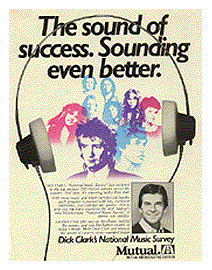
In 1985, Westwood One, a major radio production company and syndicator—that is, a budding network—was looking to expand its operations. Westwood and Mutual were a good match: The demographics of Mutual affiliates tended to be adult; most of the stations that bought Westwood's programming, much of it in the pop music field, had substantially younger audiences. Mutual had the news operations that Westwood lacked. And there was Mutual's size; though down from its peak, it still commanded 810 affiliates, a strong second among the Big Four.[96] In September 1985, Amway sold the network to Westwood One for $39 million.[97] "It's a perfect fit," declared Westwood head Norman J. Pattiz. Referring to the united company's ability to give advertisers access to a broad demographic sweep, he called it "a classic case of two plus two equaling five."[98] In 1987, the number got even bigger: Westwood One snapped up Mutual's long-time competitor, the NBC Radio Network, for $50 million. Mutual was now part of a much larger programming service, and its identity was being slowly phased out. In 1993, when Larry King switched his radio show to the daytime a year before giving it up, the late-night call-in slot went to WCFL alumnus Jim Bohannon; within a few years, it was a Westwood One–branded show.[99] Westwood One was itself taken over by Infinity Broadcasting in 1994.[100] In a deal announced in June 1996 and completed that December, CBS's new parent company, Westinghouse, acquired Infinity for just shy of $5 billion.[101] The direct descendants of the three original U.S. network companies had merged.
By this time, Mutual was little more than a brand name for certain news and sports programming provided by the new conglomerate's Westwood One division. Mutual and NBC Radio newscasters sat back to back in the Westwood One studio, the former main Mutual facility in Crystal City, Virginia.[99] In early 1999, Westwood One announced it was dropping the Mutual brand in favor of CNN Radio, which it began distributing through a deal with Time Warner's Turner Broadcasting System. A former member of the news team described the end: "Official time of Mutual Radio's death was Midnight 4/17/99. No tribute, no mention it was the last newscast ... it just died."[102] The Crystal City facility was closed in March 2001, and Westwood's primary operations were transferred to the CBS Broadcast Center in New York City.[103]
Legacy
Some current programming on Westwood One, which is now owned by Cumulus Media, can still trace its lineage directly to Mutual. Jim Bohannon remains on the air, hosting his interview/call-in show which is a direct descendant of Herb Jepko's 1975 launch on Mutual. Bohannon also hosted the morning news magazine, America in the Morning, from its premiere on Mutual in 1984 until leaving the show in December, 2015.[104] The current incarnation of Meet the Press, which launched on Mutual in 1945, has a simulcast on Westwood One.[105] A simulcast of TV's Larry King Live continued to run until the end of 2009. Country Countdown USA, founded as a Mutual program after the Westwood One purchase, continues to air in its original format as CMT Country Countdown USA.[106]
The radio rights to Notre Dame Fighting Irish football were eventually rebranded as a Westwood One product, years before the end of the Mutual network itself. At the conclusion of the 2007 football season, Notre Dame ended its relationship with Westwood One, citing financial reasons,[107] and subsequently announced a deal with ISP Sports.[108]
Mutual founding stations WOR and WLW are now both under the ownership of iHeartMedia, who operates a network of their own, Premiere Networks. WGN syndicates Orion Samuelson farm reports through its Tribune Radio Network,[109] which also carried Chicago Cubs broadcasts until 2014.[110] WOR syndicated some weekend talk programs through the WOR Radio Network, and several WLW hosts have been syndicated through Premiere.
Mutual Broadcasting System LLC, based in Spokane, Washington, uses the Mutual and Liberty names on its two stations, KTRW–Spokane and KTAC–Ephrata. These stations have no connection with the original network. They present adult standards, nostalgia, and some Christian programming, using the Mutual name as part of their old-time radio branding.
See also
Shows[l]
|
|
People
|
|
Notes
- ^ All available sources concur that Mutual cofounders WOR–Newark, N.J./New York, WXYZ–Detroit, and WLW–Cincinnati were also founding members of the Quality Network. Sources differ on whether WGN–Chicago, Mutual's fourth original member, or another Chicago station, WLS, represented the city in the Quality Network. In addition, there is no consensus on the fundamental matter of the degree of connection involved: some sources claim the Quality Network had ceased to exist by the end of 1929; others that it carried on and simply changed its name and formalized its structure in 1934. As scholar James Schwoch (1994) puts it, "The origins of the Mutual Broadcasting System are somewhat murky and open to dispute." Indeed, a claim Schwoch makes just two sentences later—that "the permanent establishment of the Mutual network is bound up in the popularity of a single radio program, 'The Lone Ranger'"—is disputed by several scholars.[4]
- ^ Start and end dates for original dramatic and quiz series given in the main text are based on the standard and most comprehensive reference work, On the Air: The Encyclopedia of Old-Time Radio, by John Dunning (1998). Dunning's detailed information has been checked, where available, against the even more detailed reports of Jerry Haendiges' Vintage Radio Logs and against the much less detailed but more recently published The Encyclopedia of American Radio: An A–Z Guide to Radio from Jack Benny to Howard Stern, by Ron Lackmann (2000). Dunning and Haendiges agree in almost all cases where they both cover a show. In the few cases where they differ slightly, a specific citation is given to the one whose data appears better supported, internally and/or by reference to Lackmann.
- ^ The two available authoritative sources differ widely on the affiliate figures for the year. Media historians F. Leslie Smith et al. give Mutual—140, NBC—113 (53 with Red, 60 with Blue), and CBS—112.[113] Media historian James Schwoch (1994) gives NBC—182, Mutual—160, and CBS—122.[40] It is unclear what different methodologies were employed to produce these varying results.
- ^ For advertising sales in the first eight months of 1941, see "Happy Birthday MBS," Time, September 15, 1941 (available online). NBC's take was now less than eight times as much as Mutual's. All available reports suggest that the gap did not close much further during the decade.
- ^ Media historian Marsha Francis Cassidy also refers to Mutual's wish-fulfillment show Heart's Desire as one of those that "made the shift to local or regional television",[62] but it has not been possible to confirm this. For a detailed account of this model of radio art, see "Kovacs v. Mutual Broadcasting System (1950) 99 CA2d 56 (California 2d District Court ruling)". Continuing Education of the Bar—California (University of California/State Bar of California). 1950-08-18. Retrieved 2010-03-01.
- ^ A scholarly journal article claims that the Don Lee purchase brought with it a "19 percent interest in the Mutual Broadcasting System," which would be down from the 25 percent of the 1940 restructuring. However, the reliability of this source is questionable, as it incorrectly claims in the same paragraph that the "East Coast-based Yankee Network ... was also acquired at this time" by General Tire.[114] As detailed above, General Tire in fact acquired Yankee in 1943.
- ^ Marshall (1998) and Day (2004) describe the details of the original deal very differently, agreeing only that it was for six years at $1 million a year. Marshall says that a contract was signed on December 26, 1950, between baseball's major leagues, in the person of Commissioner Happy Chandler, on one side and Mutual and the Gillette Safety Razor Company on the other for the television rights. Day says baseball's contract was solely with Gillette, that it was for both radio and television rights, and that Gillette "[l]ess than a year after acquiring the broadcast rights ... transferred" them to Mutual. They also characterize the original contract rather differently. Marshall calls it "one of the outstanding achievements of the Chandler commissionership." Day credits Chandler with "deftly avoid[ing] a financial crisis," but agrees with the prevailing opinion of the players that Chandler "vastly underestimated the value" of the rights. The fact, which Day provides, that Mutual sold the package to NBC for $4 million a year lends support to his position.[59]
- ^ Mutual does have a TV network in the realm of imagination. The Amazing Adventures of Kavalier & Clay, by novelist Michael Chabon, refers to The Escapist, a show starring Peter Graves said to have run from 1951 to 1955 on the Mutual Television Network (p. 596).
- ^ In August 1951, the low-powered, baseball-oriented Liberty Broadcasting System (LBS) had 431 affiliates.[115]
- ^ Radio historian Ronald Garay says Mutual launched its Game of the Day in 1949.[116] Sports historians Jerry Gorman et al. say it was 1950.[117] Garay indicates that the concept was picked up from the Liberty Broadcasting System, founded in 1947. Yet the National Baseball Hall of Fame lists among famed broadcaster France Laux's credits "Mutual Game of the Day (1939–41, '44)."
- ^ For more on Zero Hour, see "The Zero Hour—1974". Submitted for Your Perusal: The Rod Serling Sound Collection. Retrieved 2010-03-01.
- ^ Run dates on Mutual are per Dunning (1998), checked against Lackmann (2000). Note that Dunning does not list The Sea Hound as ever running on Mutual, but Lackmann does. Neither lists Skyroads.
References
- ↑ Dick Rosse. "How Sweet It Was." Broadcasting & Cable, April 19, 1999, pp. 74, 76.
- ↑ Robinson (1979), p. 28; Cox (2002), p. 177; McLeod, Elizabeth (1999–2002). "Some History of the Mutual Broadcasting System". History of American Broadcasting (Jeff Miller). Retrieved 2010-03-01. Extensive discussion of the network's history and organization by radio historian. Note that the page's introductory content (not written by McLeod) gives September 15, 1934, as the network's organizational date, apparently based on a 1999 newspaper article reproduced at the bottom of the page. All authoritative sources, including McLeod, give September 29. (The newspaper article also incorrectly states that the network featured commentator Drew Pearson; it never did. His shows appeared on NBC and NBC Blue/ABC. See, e.g., Nimmo [1997], p. 271. The article also incorrectly suggests that when The Lone Ranger "rode into the radio sunset in 1954," it directly affected the network. The show hadn't been on Mutual since 1942.)
- ↑ Dunning (1998), p. 724.
- 1 2 For argument that Mutual was primarily a vehicle for The Lone Ranger, see, e.g., Olson (2000), p. 173; Head (1976), p. 142; Schwoch (1994). For counterargument and popularity of Lum and Abner, see, e.g., Hilmes (1997), pp. 107–8; Hollis (2001), p. 41; McLeod, Elizabeth (1999-04-12). "Some History of the Mutual Broadcasting System/Correspondence: 'Mon, 12 APR 99'". History of American Broadcasting (Jeff Miller). Retrieved 2010-03-01.
- ↑ Whitaker (2002), pp. 537–38 (available online). Archived June 6, 2012, at the Wayback Machine.
- ↑ Gorman et al. (1994), p. 105.
- ↑ "Adcraft" (PDF). Advertising Age. 2005-12-05. Archived from the original (PDF) on March 26, 2009. Retrieved 2010-03-01. "The Lone Ranger Episode Log". Jerry Haendiges' Vintage Radio Logs. 2005-02-18. Retrieved 2010-03-01.
- 1 2 3 "M. B. S.," Time, January 4, 1937 (available online)
- ↑ Alexander (2002), p. 110; Gorman et al. (1994), p. 89.
- ↑ See, e.g., Patterson (2004), p. 90.
- ↑ "The Colonial Network". BostonRadio.org. Retrieved 2010-03-01.
- ↑ Christopher H. Sterling and Michael C. Keith. Sounds of Change: A History of FM Broadcasting in America. University of North Carolina Press, 2009, p. 24.
- ↑ "Station Guide/WGAR-AM". Cleveland Broadcast Radio Archives. Archived from the original on May 9, 2008. Retrieved 2010-03-01.). Note that the latter source incorrectly states, for its September 1, 1936, entry (magazine cover date, not event date), "WLW(AM) Cincinnati turns in its Mutual stock but remains as outlet." WLW, in fact, never had any Mutual stock and it left Mutual to become an NBC affiliate (see, e.g., Schramm [1969], p. 51). Given the egregiousness of this error, too much weight must not rest on this source for any reported data; there is anecdotal support and, to date, no contravening evidence for its list of five Midwestern Mutual affiliates.
- ↑ Schneider, John F. (2009). "The History of KFRC, San Francisco and the Don Lee Networks". Bay Area Radio Museum. Retrieved 2010-03-01.
- ↑ Clarke (1996), ch. 11 (available online). Archived May 16, 2008, at the Wayback Machine.
- 1 2 "The Boston Radio Timeline". BostonRadio.org. Retrieved 2010-03-01.
- 1 2 Cox (2002), p. 178.
- ↑ "Station Guide/WHK-AM". Cleveland Broadcast Radio Archives. Retrieved 2010-03-01.
- 1 2 3 "National Broadcasting Co., Inc., et al. v. United States et al. (U.S. Supreme Court decision)". Freedom of Speech in the United States—Free Speech Library. Boston College. 1943-05-10. Retrieved 2010-03-01.
- ↑ Brady (1989), p. 78.
- ↑ Hilmes (1997), pp. 99–100; Jaker et al. (1998), p. 129.
- ↑ Callow (1995), p. 321.
- ↑ "Green Hornet Episode Log". Jerry Haendiges' Vintage Radio Logs. 2004-01-29. Retrieved 2010-03-01.
- ↑ McDougal (2001), p. 68.
- ↑ Highway Traveler 11, no. 2 (April–May 1939), p. 27. There are anecdotal suggestions that the network aired the Indianapolis 500 in previous years, but to date no concrete evidence has been found. For later Mutual coverage of the race, see "1949 Indianapolis 500". Speedway Audio. Archived from the original on March 21, 2007. Retrieved 2010-03-01.
- ↑ Bliss (1991), pp. 34, 36.
- ↑ Bliss (1991), pp. 60–61.
- ↑ Nimmo and Newsome (1997), p. 173.
- ↑ Brown (1998), p. 180; Bliss (1991), pp. 97–98.
- ↑ Rose (1971), p. 68.
- ↑ Nimmo and Newsome (1997), p. 178.
- ↑ Robinson (1979), p. 29.
- ↑ Jaker et al. (1998), p. 93; "Rubber Yankee," Time, January 18, 1943 (available online).
- ↑ See Robinson (1979), pp. 26, 27, 29.
- ↑ Quoted in Robinson (1979), p. 116. See also "Chains Unchained?" Time, May 12, 1941 (available online).
- ↑ Quoted in Robinson (1979), p. 74.
- ↑ "Mutual Seeks to End Action Against RCA; Official Says Transfer of Blue Network Will Solve Issue," New York Times, October 12, 1943.
- ↑ Smith et al. (1998), p. 43; "AM Network-Affiliated Radio Stations, 1949". 1949 Broadcasting-Telecasting Yearbook. History of American Broadcasting (Jeff Miller). 1948-12-06. Retrieved 2010-03-01.
- ↑ Leblebici et al. (1991), p. 17 (online pagination).
- 1 2 Schwoch (1994).
- ↑ Segrave (1999), p. 22. For more on the evaporation of Mutual's TV plans, see Schwoch (1994).
- ↑ Cox, Jim (Jul 1, 2009). American Radio Networks: A History. Jefferson, North Carolina: McFarland & Company, Inc. p. 83. ISBN 9780786441921. Retrieved 1 July 2009.
- ↑ Nachmann (2000), p. 350.
- ↑ Cassidy (2005), pp. 40–43, 187–88.
- ↑ http://millercenter.org/president/fdroosevelt/speeches/speech-3333 Roosevelt, Franklin D. "Fireside Chat 27: On the Tehran and Cairo Conferences (December 24, 1943)". Miller Center of Public Affairs, University of Virginia. Retrieved 2016-07-06.
- ↑ Bliss (1991), p. 65.
- ↑ "History: Chronology (1940 to 1959)". Pro Football Hall of Fame. Retrieved 2010-03-01.
- ↑ Brown (1998), pp. 183, 190.
- ↑ Bliss (1991), p. 135; "WOR: Interruption of Giants-Dodgers Football Game". Authentic History Center. 1941-12-07. Retrieved 2010-03-01.
- ↑ Crook (1998), pp. 206–7.
- ↑ Nimmo and Newsome (1997), p. 311.
- ↑ Bliss (1991), pp. 202–3.
- ↑ Savage (1999), p. 345 n. 123.
- ↑ "WGN Radio Timeline: 1940s–1950s". WGN Gold. Retrieved 2010-03-01. "Chicago Theater of the Air Episode Log". Jerry Haendiges' Vintage Radio Logs. 2008-04-15. Retrieved 2010-03-01.
- ↑ "Sherlock Holmes Episode Log". Jerry Haendiges' Vintage Radio Logs. 2008-07-06. Retrieved 2010-03-01.
- 1 2 Dunning (1998), p. 382.
- ↑ Cassidy (2005), p. 20.
- ↑ "Don Lee Sale Approval Asked," Los Angeles Times, November 21, 1950; "Sale of Don Lee System Approved: Cash Payment of $12,320,000 Involved in FCC Decision," Los Angeles Times, December 28, 1950.
- 1 2 Marshall (1998), 384; Day (2004), pp. 230–31.
- ↑ "Radio-TV Merger Approved By F.C.C.; Deal Covers Macy's Transfer of WOR Interests to General Tire's Don Lee System", New York Times, January 18, 1952; "Earnings Fall 5% for Macy System; Television's High Cost for Subsidiary, General Teleradio, Cuts Consolidated Net," New York Times, October 11, 1950; Howard (1979), pp. 150–52.
- ↑ "General Tire Gets Control of M. B. S.; Shareholders at Meeting Vote 2-for-1 Stock Split—Company Buys More TV Stations," New York Times, April 2, 1952.
- 1 2 Cassidy (2005), p. 41.
- ↑ Cox (2002), p. 178; see also pp. 127–28, for the 1950 and 1960 figures for the four major networks.
- ↑ "Sale of Mutual Expected Today; Radio Network Is Going to Group From West Coast," New York Times, July 17, 1957.
- ↑ "Mutual Network Brings 2 Million; Radio System Is Purchased by Scranton Corporation in Move for Expansion," New York Times, September 12, 1958.
- ↑ See Bareiss (1998), pp. 379–82; in particular, p. 381, for the development of limited sponsorship.
- ↑ Garay (1992), p. 64.
- ↑ Ward (2005), pp. 152–55; "The Price of Publicity," Time, September 14, 1959 (available online).
- ↑ Cox (2002), p. 127.
- ↑ Jaker et al. (1998), p. 155.
- ↑ "Mutual Network 3 Million in Debt; Files Petition in U.S. Court Seeking Settlement While Continuing in Control," New York Times, July 2, 1959; "News of TV and Radio," New York Times, July 5, 1959.
- ↑ Bliss (1991), pp. 258–59.
- ↑ Doherty (2003), p. 184.
- ↑ Griffith, Benjamin (2002-01-29). "Bob and Ray". St. James Encyclopedia of Pop Culture. BNET (CBS Interactive). Retrieved 2010-03-01.
- ↑ "Irish Looks To Continue Ten-Game Home Win Streak". Notre Dame Fighting Irish, The Official Athletic Site (CBS Interactive). 1999-09-13. Retrieved 2010-03-01. Note that this source refers to "Mutual/Westwood One" months after Mutual's dissolution had been announced.
- ↑ "Mutual Network to Be Sold Again; Minnesota Mining Expected to Close Deal This Week," New York Times, April 18, 1960.
- ↑ Cox (2002), p. 128.
- ↑ "Mutual Network Changes Owners; 3M Company Sells System to Newly Formed Group," New York Times, July 10, 1966.
- ↑ "New Company Buys Mutual Broadcasting". Park City Daily News. July 6, 1966. Retrieved 28 October 2014.
- ↑ Bliss (1991), pp. 62–63.
- ↑ "Robert Pauley Heads Radio Network." (Washington DC) Evening Star, June 27, 1968, p. 2
- ↑ "Victor Diehm New Prexy of MBS As Radio Web Regroups, Cuts Costs." Variety, October 22, 1969, p.46.
- ↑ 1973 World Book (1973), p. 479.
- ↑ Thompson (1993), p. 192 n. 85.
- ↑ "Company Profile—Leadership". American Urban Radio Networks. Archived from the original on September 14, 2011. Retrieved 2010-03-01.
- ↑ "In the Matter of the Petition of Mutual Broadcasting System Inc. for Redetermination of a Deficiency (New York State Tax Commission ruling)" (PDF). New York State Division of Tax Appeals. 1987-08-27. Retrieved 2010-03-01.
- ↑ "Mutual Radio Applies to F.C.C. to Be First All-Satellite Network," New York Times, November 22, 1977; U.S. Congress, House Committee on Appropriations, Departments of Labor, Health and Human Services, Education, and Related Agencies Appropriations for 1986, p. 198.
- ↑ Cox (2009), p. 84.
- ↑ "Radio's Latest Boom: Late-Night Talk Shows, New York Times, May 2, 1982 (available online); "TV Mailbag—About Radio Talk Shows," New York Times, June 20, 1982 (available online).
- ↑ Cox (2009), p. 83.
- ↑ Judge, Dick (2005-12-03). "Mutual Radio Theater". Original Old-Time Radio (OTR) WWW Pages. Retrieved 2010-03-01.
- ↑ "Network Radio Is Tuning into Satellites," New York Times, August 2, 1981; "Radio Networks: New 'Golden Age,'" New York Times, May 1, 1982; "Bringing 'Turnkey' Radio into Everybody's Backyard," New York Times, June 13, 1982.
- ↑ Dunning (1998), p. 603.
- ↑ "Radio Station WCFL Sold to Religious Group," Chicago Tribune, November 4, 1983.
- ↑ "Doubleday to Buy Mutual's WHN," New York Times, October 2, 1984.
- ↑ "Westwood One, Inc.—Company History". International Directory of Company Histories. Funding Universe. 1998. Retrieved 2010-03-01.
- ↑ "Westwood to Buy Mutual Network," New York Times, September 17, 1984; "Business People; Head of Westwood One Elated by Mutual Deal," New York Times, September 18, 1984; Cox (2002), p. 178.
- ↑ Quoted in "Westwood One, Inc.—Company History". International Directory of Company Histories. Funding Universe. 1998. Retrieved 2010-03-01.
- 1 2 Lucier (1998).
- ↑ "Company News; Westwood One Completes Purchase of Unistar Radio," New York Times, February 5, 1994 (available online).
- ↑ "To Infinity and Beyond: Is a Radio Deal Too Big?; Westinghouse Would Own 32% of Top Markets," New York Times, June 21, 1996; "Two Radio Giants to Merge, Forming Biggest Network," New York Times, June 21, 1996; "F.C.C. Approves Merger of Westinghouse and Infinity," New York Times, December 27, 1996 (available online); "Company Briefs," New York Times, January 1, 1997 (available online).
- ↑ Cox (2002), pp. 178–79. See also "Mutual's Riding Off Into Radio Sunset," New York Daily News, April 7, 1999. While this article is useful for its 1999 reports and quotes, it is filled with errors about Mutual's history.
- ↑ Lee, Fee (2002). "WAVA 10 Year 'Death Anniversary' e-Reunion". FrankMurphy.com. Retrieved 2010-03-01. Personal testimonial of Westwood One employee.
- ↑ "America In The Morning—About The Show". The Official Jim Bohannon Site. Archived from the original on August 10, 2009. Retrieved 2010-03-01.
- ↑ "Meet the Press". Dial Global. Archived from the original on March 15, 2012. Retrieved 2012-04-11.
- ↑ "Welcome to Country Countdown USA". Country Countdown USA. Retrieved 2010-10-27.
- ↑ "If Roberts Has Anything to Say, He'll Rejoin Irish". Chicago Tribune. Retrieved 2007-06-28.
- ↑ "Notre Dame And ISP Join To Produce Football Radio Network". und.cstv.com. Retrieved 2008-04-21.
- ↑ Broadcaster Orion Samuelson will be at Farmfest Aug. 5. Minnesota Farm Guide. Retrieved September 7, 2015.
- ↑ Marek, Lynne (May 30, 2014). "WGN America to drop Chicago sports". Chicago Business. Retrieved June 27, 2014.
- ↑ According to archivist Jerry Haendiges' respected website, the program ran through March 26, 1950. "Blackstone The Magic Detective Episode Log". Jerry Haendiges' Vintage Radio Logs. 2005-04-12. Retrieved 2012-04-11.
- ↑ Markstein, Donald D. (2005–2007). "Skyroads". Don Markstein's Toonopedia. Retrieved 2010-03-01.
- ↑ Smith et al. (1998), p. 43.
- ↑ Crane (1980).
- ↑ Garay (1992), p. 32.
- ↑ Garay (1992), p. 50.
- ↑ Gorman et al. (1994), pp. 91, 105.
Sources
- Alexander, Charles C. (2002). Breaking the Slump: Baseball in the Depression Era. New York: Columbia University Press. ISBN 0-231-11342-0.
- Bareiss, Warren (1998). "Sustaining Programs". In Donald G. Godfrey; Frederic A. Leigh. Historical Dictionary of American Radio. Westport, Conn., and London: Greenwood Press. ISBN 0-313-29636-7.
- Bliss, Edward (1991). Now the News: The Story of Broadcast Journalism. New York: Columbia University Press. ISBN 0-231-04402-X.
- Brady, Frank (1990) [1989]. Citizen Welles: A Biography of Orson Welles. New York: Anchor. ISBN 0-385-26759-2.
- Brown, Robert J. (1998). Manipulating the Ether: The Power of Broadcast Radio in Thirties America. Jefferson, N.C., and London: McFarland. ISBN 0-7864-2066-9.
- Callow, Simon (1995). Orson Welles: Vol. 1—The Road to Xanadu. New York: Viking. ISBN 0-14-025456-0.
- Cassidy, Marsha Francis (2005). What Women Watched: Daytime Television in the 1950s. Austin: University of Texas Press. ISBN 0-292-70627-8.
- Clarke, Donald (1996). The Rise and Fall of Popular Music. New York: St. Martin's. ISBN 0-312-14200-5.
- Cox, Jim (2002). Say Goodnight, Gracie: The Last Years of Network Radio. Jefferson, N.C.: McFarland. ISBN 0-7864-1168-6.
- Cox, Jim (2002). American Radio Networks: A History. Jefferson, N.C.: McFarland. ISBN 0-7864-4192-5.
- Crane, Marie Brenne (1980). "Radio Station KGB and the Development of Commercial Radio in San Diego," Journal of San Diego History 26, no. 1 (winter). ISSN 0022-4383 (available online).
- Crook, Tim (1998). International Radio Journalism: History, Theory and Practice. London and New York: Routledge. ISBN 0-415-09672-3.
- Day, Frederick J. (2004). Clubhouse Lawyer: Law in the World of Sports. Lincoln, Neb.: iUniverse. ISBN 0-595-31850-9.
- Doherty, Thomas (2003). Cold War, Cool Medium: Television, McCarthyism, and American Culture. New York: Columbia University Press. ISBN 0-231-12952-1.
- Dunning, John (1998). On the Air: The Encyclopedia of Old-Time Radio. New York and Oxford: Oxford University Press. ISBN 0-19-507678-8.
- Garay, Ronald (1992). Gordon McLendon: The Maverick of Radio. New York, Westport, Conn., and London: Greenwood Press. ISBN 0-313-26676-X.
- Gorman, Jerry, Kirk Calhoun, and Skip Rozin (1994). The Name of the Game: The Business of Sports. New York et al.: John Wiley & Sons. ISBN 0-471-59423-7.
- Head, Sydney W. (1976). Broadcasting in America: Survey of Television and Radio. New York: Houghton Mifflin. ISBN 0-395-20644-8.
- Hilmes, Michelle (1997). Radio Voices: American Broadcasting, 1922–1952. Minneapolis and London: University of Minnesota Press. ISBN 0-8166-2621-9.
- Hollis, Tim (2001). Hi There, Boys and Girls!: America's Local Children's TV Programs. Jackson: University Press of Mississippi. ISBN 1-57806-396-5.
- Howard, Herbert H. (1979). Multiple Ownership in Television Broadcasting: Historical Development and Selected Case Studies. New York: Arno Press. ISBN 0-405-11759-0.
- Jaker, Bill, Frank Sulek, and Peter Kanze (1998). The Airwaves of New York: Illustrated Histories of 156 AM Stations in the Metropolitan Area. Jefferson, N.C.: McFarland. ISBN 0-7864-0343-8.
- Kirkley Jr.; Donald H. (1979) [1967]. A Descriptive Study of the Network Television Western During the Seasons 1955–56—1962–63. New York: Arno Press. ISBN 0-405-11761-2.
- Lackmann, Ron (2000). The Encyclopedia of American Radio: An A–Z Guide to Radio from Jack Benny to Howard Stern. New York: Facts on File/Checkmark. ISBN 0-8160-4077-X.
- Leblebici, Huseyin, Gerald R. Salancik, Anne Copay, and Tom King (1991). "Institutional Change and the Transformation of Interorganizational Fields: An Organizational History of the U.S. Radio Broadcasting Industry," Administrative Science Quarterly (September). ISSN 0001-8392 (available online).
- Lucier, James P. (1998). "Jim Bohannon On Air—Radio Talk Show Host," Insight on the News (February 9). ISSN 1051-4880 (available online).
- Marshall, William J. (1998). Baseball's Pivotal Era, 1945–1951. Lexington: University Press of Kentucky. ISBN 0-8131-2041-1.
- McDougal, Dennis (2001) [1998]. The Last Mogul: Lew Wasserman, MCA, and the Hidden History of Hollywood. New York: Da Capo. ISBN 0-306-81050-6.
- Nachmann, Gerald (2000). Raised on Radio. Berkeley, Los Angeles, and London: University of California Press. ISBN 0-520-22303-9.
- Nimmo, Dan D. & Chevelle Newsome (1997). Political Commentators in the United States in the 20th Century: A Bio-Critical Sourcebook. Westport, Conn.: Greenwood. ISBN 0-313-29585-9.
- 1973 World Book (1973). The 1973 World Book Year Book: The Annual Supplement to the World Book Encyclopedia. Chicago: Field Enterprises Educational Corp. ISBN 0-7166-0473-6.
- Olson, James Stuart (2000). Historical Dictionary of the 1950s. Westport, Conn., and London: Greenwood. ISBN 0-313-30619-2.
- Patterson, Ted (2004). The Golden Voices of Football. Champaign, Ill.: Sports Publishing. ISBN 1-58261-744-9.
- Robinson, Thomas Porter (1979) [1943]. Radio Networks and the Federal Government. New York: Arno Press. ISBN 0-405-11772-8.
- Rose Jr.; Cornelia B. (1971). National Policy for Radio Broadcasting. New York: Arno Press/New York Times. ISBN 0-405-03580-2.
- Savage, Barbara Dianne (1999). Broadcasting Freedom: Radio, War, and the Politics of Race, 1938–1948. Chapel Hill, N.C.: University of North Carolina Press. ISBN 0-8078-4804-2.
- Schramm, Wilbur (1969). Mass Communications: A Book of Readings. Urbana and Chicago: University of Illinois Press. ISBN 0-252-00015-3.
- Schwoch, James (1994). "A Failed Vision: The Mutual Television Network," Velvet Light Trap 33 (spring). ISSN 1542-4251 (available online, with free membership).
- Segrave, Kerry (1999). Movies at Home: How Hollywood Came to Television. Jefferson, N.C.: McFarland. ISBN 0-7864-0654-2.
- Smith, F. Leslie, John W. Wright II, and David H. Ostroff (1998). Perspectives on Radio and Television: Telecommunication in the United States. Mahwah, N.J.: Lawrence Erlbaum. ISBN 0-8058-2092-2.
- Thompson, Julius Eric (1993). The Black Press in Mississippi, 1865–1985. Gainesville: University Press of Florida. ISBN 0-8130-1174-4.
- Ward, Richard Lewis (2005). A History of the Hal Roach Studios. Carbondale: Southern Illinois University Press. ISBN 0-8093-2727-9.
- Whitaker, Jerry C. (2002). Audio/Video Protocol Handbook: Broadcast Standards and Reference Data. New York et al.: McGraw-Hill. ISBN 0-07-139643-8.
External links
- How Far Should the Government Control Radio? text of G.I. Roundtable pamphlet with details on Mutual in first section ("Who Is It That Fills The Air With Radio Waves?"), ca. 1945; part of American Historical Association website
- Reporters' Roundup Transcript radio broadcast transcript of group interview with guest U.S. Senator Everett M. Dirksen on weekly Mutual news program, September 16, 1957; part of Everett Dirksen Center website
- Truman Library—Charter Heslep Papers summary introduction to and listing of archive holdings of Mutual broadcaster's papers (note that the Collection Description text incorrectly states that Chicago station WLS was an original member of Mutual; while it may have been involved in the predecessor Quality Network, it was not part of Mutual); part of Truman Presidential Museum and Library website
Listening
- Gabriel Heatter on the Doolittle Raid audio extract from news report, May 10, 1942; part of Authentic History Center website
- Mutual: Blackout on the West Coast audio extract from news report, December 8, 1941; part of Authentic History Center website
- Spotlight on Golden Age Networks—MBS links to audio samples of classic Mutual shows (note that the Lone Ranger sample comes from 1948, after the show had left Mutual); part of Digital Deli Online
- WOR: Interruption of Giants–Dodgers Football Game audio clip of news flash, December 7, 1941; part of Authentic History Center website